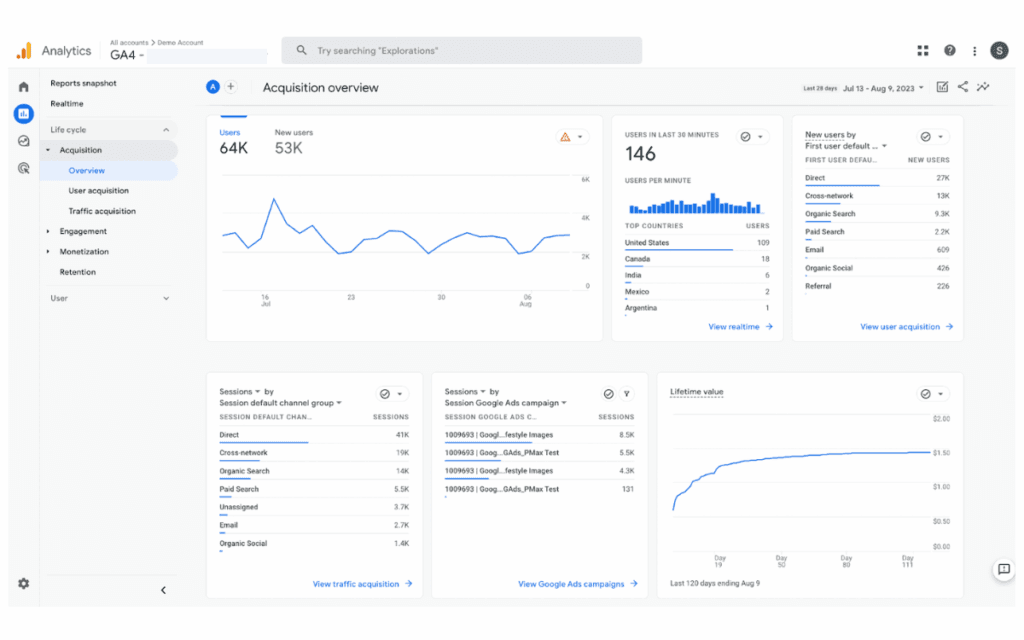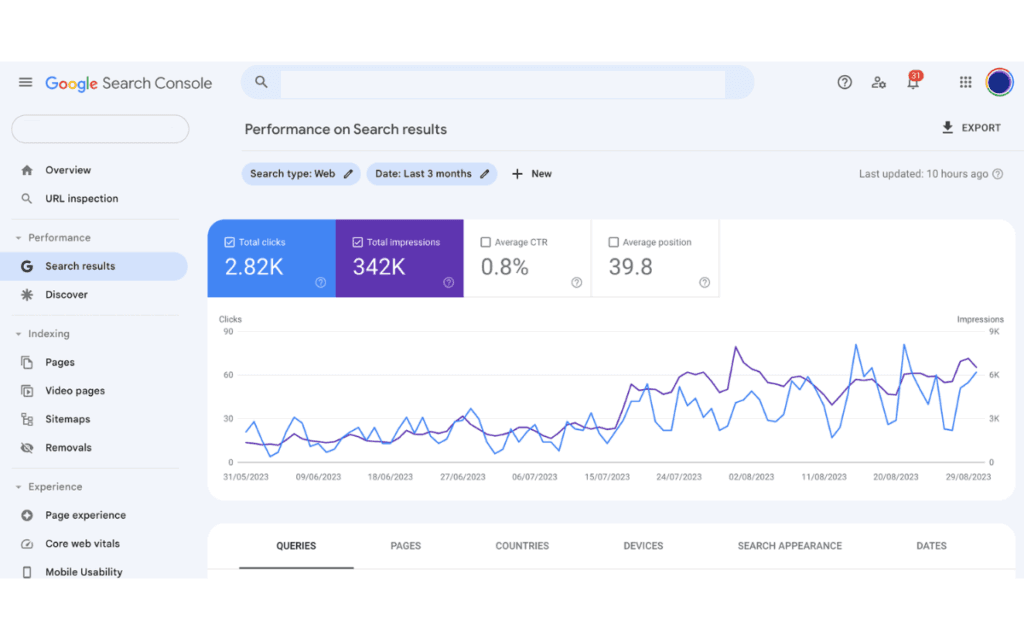
Most crypto project owners and exchange operators know they need SEO. What many overlook is that SEO without measurement is guesswork. You might be pushing content, tweaking keywords, or building links. Yet if you are not tracking the right metrics, you cannot know if your efforts are working.
I have worked with crypto and forex site owners who came to CryptoForexSEO frustrated. They had invested months into SEO but could not explain why their traffic was flat. In most cases, they were tracking the wrong things or not tracking at all.
The truth is, rankings are just one piece of the puzzle. Metrics like organic traffic, click-through rate, bounce rate, and conversion rate show you how your SEO is performing and where you are losing opportunities. When you know how to read the data, you can make the right moves at the right time.
In this article, we will walk through the essential SEO metrics for crypto websites. We will explore how to track them using Google Analytics and Search Console, and how to interpret the numbers so they lead to action. You will see exactly what to measure and how to turn that information into growth for your crypto project.
Table of Contents
ToggleCrypto is one of the most competitive online markets. You are not just competing with other projects in your niche. You are competing with global exchanges, token launch platforms, and even influencers who dominate search results.
In this environment, you cannot afford to work in the dark. Tracking SEO metrics is like tracking the market. Without a chart, you are guessing.
When Bitcoin or Ethereum trends, searches spike. When a new meme coin explodes on social media, people rush to Google to learn more. If your site ranks during these surges, you get a flood of traffic. If you do not, the traffic goes to someone else.
The difference between being visible and invisible can be massive. According to a Backlinko study, the number one Google result gets 27.6% of clicks. The number two spot gets 15.8%. In crypto, that gap can mean thousands of missed wallet connections or token sales.
A lot of crypto site owners come to CryptoForexSEO saying they “just need higher rankings.” Rankings matter. But they are not the full story. A token landing page could be in the top five for a keyword and still fail if:
If you are only watching where you rank, you might miss that people are bouncing, that your click-through rate is low, or that organic visitors are not converting.
If you run a crypto website, you need more than a vague idea of your traffic. You need specific numbers that show how your site is performing in search and how visitors behave once they land.
Here are the metrics that matter most.
Organic traffic is the number of visitors coming to your site from unpaid search results. For crypto projects, this could be people searching for your token name, exchange reviews, staking guides, or blockchain news.
Why it matters:
Tip: Track both branded and non-branded organic traffic. Branded traffic shows your brand awareness. Non-branded traffic reveals your reach to new audiences.
CTR is the percentage of people who click your site after seeing it in search results. A high ranking means little if no one clicks through.
In crypto, a low CTR might mean your meta title is too vague, your description lacks urgency, or competitors look more trustworthy.
Aim for:
Bounce rate shows the percentage of visitors who leave after viewing just one page. In crypto, high bounce rates can happen if:
Pair bounce rate with average session duration and pages per session to get the full picture of engagement.
The longer people stay, the more trust you build. If visitors spend under 30 seconds on your site, they probably did not find what they wanted.
For crypto blogs, aim for 2–3 minutes. For exchange or token pages, aim for at least 1 minute with 2+ pages viewed.
Track your target keywords regularly. In crypto, rankings can be volatile due to market trends. A sudden drop may mean a competitor’s fresh content is outranking you or Google has re-evaluated relevance.
Do not just look at individual keywords. Group them by topic, such as “crypto wallet guides” or “DeFi tutorials,” to see where your topical authority stands.
Traffic is worthless if it does not lead to action. Conversions in crypto can be sign-ups, wallet connections, token purchases, newsletter subscriptions, or joining a community channel.
A good crypto SEO strategy tracks conversions alongside rankings and traffic so you know what actually drives revenue.
Links remain one of Google’s strongest ranking factors. But in crypto, the quality of links matters even more. Spammy backlinks can harm trust, especially since crypto is a high-risk industry in Google’s eyes.
Track:

Google Analytics is like your trading chart for SEO. It tells you what is happening on your site, where your visitors come from, and what they do before they leave. The difference is that here, instead of candlesticks, you are looking at user behavior and conversion paths.
I have seen crypto site owners open their Google Analytics once a month, glance at “Users,” and then close it. That is like checking Bitcoin’s price without looking at volume or support levels. The headline number means little without context.
Many crypto websites are built with complex frameworks, integrations for wallets, or trading dashboards. This can make analytics tracking messy if not set up properly.
In GA4:
This setup is the foundation for accurate crypto SEO metrics tracking.
Organic traffic shows the direct impact of your SEO for cryptocurrency campaigns. But in crypto, not all traffic is equal. Some visitors are just curious. Others are ready to stake or trade.
Look at:
Example: A DeFi project I worked with saw huge traffic to their “How to Stake” guide. But most users left without signing up. The issue was that the guide had no clear CTA linking to their staking platform. Once we added that, conversions jumped 43%.
For a blockchain SEO agency like ours, tracking goals is non-negotiable. In GA4, these are called conversions.
For crypto sites, common goals include:
This data lets you measure SEO ROI. If you see a keyword driving 500 visits but only two conversions, you can shift focus to better-performing keywords.
Crypto websites often get hit by bot traffic. These fake visits can inflate your numbers and mislead your SEO strategy.
In GA4:
I have seen projects panic over a sudden “traffic drop,” only to discover they had just blocked a bot network that was never real traffic. Filtering keeps your data clean and your SEO decisions accurate.

If Google Analytics is like your trade history, Google Search Console (GSC) is like the blockchain explorer for your SEO. It reveals exactly how your site appears in search, what people type before finding you, and where your technical issues are hiding.
I have worked with crypto exchanges, NFT platforms, and blockchain startups that never checked GSC until rankings tanked. That is like waiting to check Etherscan only after your transaction fails. By then, the damage is already done.
In Search Console’s Performance report, you will see the search queries (keywords) that bring people to your site.
For crypto SEO, this can be a mix of:
Why it matters:
One of our blockchain SEO clients ranked for “Ethereum staking guide” and saw thousands of visits. But most conversions came from “staking ETH on XYZ platform.” The insight? We created more branded content around staking, which doubled sign-ups in a month.
CTR (click-through rate) in GSC tells you how many people clicked after seeing your listing. In crypto, CTR often drops when your title lacks urgency or your description looks generic.
Simple fixes that work:
For example, one DeFi project had a CTR of just 1.4% for “best staking platform.” We updated their title to include “High APY, Low Risk” and saw CTR jump to 4.9% in two weeks.
Crypto websites often have unique indexing challenges. Dynamic content, exchange pages, or gated dApp areas can confuse Google’s crawler.
In GSC’s Coverage report:
A crypto token sale site we worked with had 40% of its pages excluded due to parameterized URLs. We fixed the canonical tags and resubmitted the sitemap. Within a month, organic traffic rose by 38%.
Crypto keywords can be volatile. A token’s search interest can spike overnight and vanish the next week. GSC’s average position metric helps you spot early shifts before they hurt.
If you see a steady drop for a high-value keyword, check:
By reacting quickly, you can reclaim lost ground before the loss becomes permanent.
Google Analytics and Search Console are your home base. They show you how your site performs. But if you want the full map, including where your competitors are outranking you and what gaps you need to close, you need to bring in additional SEO tools.
There are many SEO tools, but you can’t miss using platforms like Ahrefs, SEMrush, and SE Ranking, which are essential for crypto SEO.
When I work with a crypto exchange or blockchain startup, I always explain it like this: GA4 and GSC are your personal portfolio trackers. Tools like Ahrefs and SEMrush are your market scanners. They tell you not only how you’re doing but also help in competitor analysis, showing how everyone else in your niche is moving.
While Google’s tools are accurate for your own data, they cannot:
Without that visibility, your crypto SEO strategy is reactive rather than proactive.
Ahrefs is one of the most trusted tools for SEO data, especially in competitive markets like cryptocurrency.
Key uses for crypto websites:
A blockchain gaming platform we worked with used Ahrefs to find that competitors were ranking for “NFT game tokenomics explained.” They had never written on that topic. Few articles later, they were ranking in the top 5 within two months.
SEMrush is a powerful all-in-one SEO suite that excels at competitive research.
For crypto SEO services, it’s particularly useful for:
Real-world impact: One crypto exchange saw that competitors were dominating “best crypto app” queries in video carousels. They launched a YouTube strategy and embedded videos into pages. Within 90 days, they owned multiple video spots on page one.
SE Ranking is often overlooked, but it’s a great fit for smaller crypto projects or startups that want solid tracking without a heavy budget.
Benefits for SEO for cryptocurrency:
I’ve seen crypto NFT marketplaces use SE Ranking to track 500+ keywords daily while keeping costs low, then upgrade to Ahrefs once they scale.
When you combine GA4, GSC, Ahrefs, SEMrush, SE Ranking and other SEO monitoring tools, you get both a microscope and a telescope for your SEO strategy:
This bird’s-eye view is how we at CryptoForexSEO identify not just why a site is underperforming, but exactly what it needs to do to leap ahead in search rankings.
Collecting SEO data is the easy part. The real skill is knowing what the numbers mean and how to act on them. In the crypto space, this matters even more because market trends shift fast.
You do not just need to know if your traffic went up or down. You need to know why, what caused it, and what to do next before the opportunity disappears.
SEO for crypto businesses is not just about more page views translating to success. It is:
Example: A blockchain wallet company saw organic traffic double in three months. But when we compared GA4 goal completions, sign-ups had barely moved. The traffic came from educational content that attracted beginners, but the conversion path was not optimized. We added CTAs to guide them to the wallet download page, which tripled conversions.
In crypto SEO, one week’s data can be misleading. A sudden spike might be due to a trending news article, not long-term ranking growth.
Here is how to read the trend:
Never judge your SEO on a single metric. For example:
Case in point: A DeFi project ranked #3 for “best crypto staking platforms” but had a 1.8% CTR and 78% bounce rate. We rewrote the title, added proof of APY rates, and improved load speed. The CTR rose to 5.2% and bounce dropped below 60%.
This is where your secondary tracking tools come in. If your rankings or traffic drop, check:
Example: A crypto education site lost ranking for “how to buy Solana.” Ahrefs revealed a competitor had just published a 2025 updated guide with new screenshots and exchange comparisons. We responded with a refreshed version and regained the ranking in two weeks.
In crypto, search demand can shift overnight. The sites that win are the ones that react quickly without panicking.
This agile, data-driven approach is how we at CryptoForexSEO help blockchain projects stay ahead even when the market gets volatile.

Data is only useful when it guides action. In crypto SEO, the right interpretation can be the difference between ranking for a trending keyword or missing out entirely. The wrong interpretation can send you chasing vanity metrics that look good on paper but do nothing for your bottom line.
Here’s how to turn raw numbers into real growth for your cryptocurrency or blockchain website.
Keyword cannibalization happens when multiple pages on your site compete for the same keyword. This confuses search engines and weakens your authority.
Example:
A crypto exchange had three separate blog posts about “how to buy Ethereum.” Each ranked in different positions, but none cracked the top three. By merging them into a single comprehensive guide and redirecting the duplicates, they jumped to #2 in just 30 days.
How to detect it:
For crypto SEO services, we often see cannibalization around token names, “best wallet” comparisons, and crypto tax topics.
Content gaps are opportunities waiting to be claimed. They are keywords your competitors rank for but you do not.
Example:
When Solana NFTs started trending, a blockchain analytics platform we worked with had no content covering “Solana NFT floor price trackers.” Competitors were taking all the traffic. We identified this gap using SEMrush’s content gap tool and created a guide. Within two weeks, they were ranking on page one.
To find content gaps:
For SEO for cryptocurrency, this is where you can win quick traffic before the trend becomes overcrowded.
Crypto SEO is not just about traffic. It’s about measurable returns.
Example:
A blockchain wallet company improved organic traffic by 260%, but the big win came when we tracked conversions from organic search — wallet downloads rose by 23% over the same period.
How to link metrics to ROI:
For crypto SEO agencies like CryptoForexSEO, this is where we prove to clients that their investment in SEO directly fuels growth, whether that’s user adoption, token sales, or exchange registrations.
Many crypto founders fall into the trap of focusing on the wrong metrics:
Avoiding these misinterpretations keeps your crypto SEO strategy grounded in what actually moves the needle, sustainable visibility, engaged users and measurable conversions.
Once you know how to interpret your SEO data, the next step is action. In the crypto space, execution speed and precision make all the difference. Market interest shifts quickly. Your ability to adapt your site based on metrics can help you capture traffic before competitors even notice the opportunity.
Here’s how to turn data insights into targeted optimization moves.
If you spot keywords that drive high conversions, double down on them.
Example: A DeFi lending platform saw “how to stake crypto securely” driving 80% of sign-ups from organic search. We built three supporting guides and linked them back to the main staking article, increasing organic sign-ups by 45% in a month.
High rankings are wasted if people do not click. Using Search Console data, identify keywords where CTR is below average for your position.
Crypto audiences respond well to clarity, urgency, and proof — especially in volatile markets.
Search trends in crypto often explode overnight. Use Google Trends and Ahrefs’ keyword explorer to spot early signals.
Example: A blockchain SEO agency client gained 12,000 organic visits in two weeks by publishing the first comprehensive guide to a new DeFi yield aggregator.
Once you find a content gap, resist the urge to publish generic filler.
This is especially critical in SEO for blockchain projects, where trust and accuracy determine user action.
If your competitor outranks you for a crypto keyword, check their backlink profile.
We helped a Web3 SEO client outrank a competitor for “best crypto launchpads” by securing backlinks from cryptocurrency industry news outlets like CoinTelegraph and Decrypt, which also sent referral traffic.
Google prioritizes websites that deliver fast, stable, and mobile-friendly experiences. In crypto, where users expect instant updates, this is non-negotiable.
The faster your crypto site loads, the better users interact with it and the fewer users you lose

In crypto, the only constant is change. Market trends shift, algorithms evolve, and new competitors appear almost daily. That is why SEO for cryptocurrency is not a one-off task. It is an ongoing cycle of monitoring, analysis, and action.
At CryptoForexSEO, we follow a repeatable framework that keeps crypto projects ahead of the curve. You can adapt this same process for your own blockchain, exchange, or Web3 platform.
You need a quick, consistent way to detect issues before they snowball.
A Web3 wallet provider spotted a drop in impressions for their main branded keyword. A quick check revealed a competitor had launched a paid ad above them. They responded by boosting CTR on their organic listing and regained click share within a week.
Every month, dig into the bigger picture.
Crypto site owners often find that seasonal patterns affect traffic. For example, “crypto tax tips” peaks early in the year, while “NFT drops” spikes before major launches. Planning content around these cycles can amplify results.
Every quarter, zoom out to align SEO goals with business goals.
A blockchain SEO agency client pivoted from general crypto education to focusing on DeFi lending guides after seeing that those pages delivered 60% more conversions. The shift increased their organic ROI without increasing spending.
Crypto is a hyper-competitive niche. You cannot just monitor your site’s metrics; you have to watch your rivals.
By integrating competitor insights with your site’s performance data, you get a true 360° SEO view.
If you stop tracking, you lose visibility. If you track inconsistently, you miss patterns. The best-performing crypto sites in 2025 will be the ones that treat SEO monitoring like portfolio tracking: disciplined, consistent, and data-driven.
If you have ever run SEO for a crypto project, you know the feeling. One week you are ranking #1 for “best Web3 wallet.” The next, a competitor launches a massive campaign, and you drop to page two. It is exhausting.
The crypto industry moves at breakneck speed. Trends like “AI crypto coins” or “Bitcoin ordinals” can explode and fade in a month. This constant chase for rankings can lead to SEO burnout, especially for founders or marketing teams wearing too many hats.
When this happens, SEO stops being strategic and becomes reactive. And in crypto, reactive strategies usually lose.
To avoid burnout, create a process that matches your team’s capacity.
One of our clients, a mid-sized crypto exchange, moved from daily ranking checks to weekly reviews. They focused on action over panic and improved organic traffic by 28% in three months while reducing team stress.
In trading, you learn to zoom out when looking at charts. A sudden dip on the hourly chart might be irrelevant on the weekly view. The same principle applies to SEO.
Short-term ranking drops can happen for dozens of reasons: algorithm updates, competitor campaigns, or seasonal shifts. What matters is your long-term trend. If your year-over-year organic growth is up, you are winning.
Crypto SEO is not about chasing every micro-trend. It is about building an authoritative foundation so that when the next big market wave comes, you are already positioned to capture it.
The most successful crypto websites in 2025 will be those that combine consistent data-driven action with the patience to let SEO momentum compound.
SEO metrics are only as powerful as the insights and actions you derive from them. In crypto, this means tracking not just rankings or hits, but real-world results—wallet sign-ups, token sales, and engaged users. Use tools like GA4 and Google Search Console to understand your site’s performance. Layer in Ahrefs or SEMrush for competitor insights and hidden opportunities. Balance that with real-world questions from People Also Ask, Quora, and Reddit to stay in tune with what your audience truly cares about.
If you feel overwhelmed by all the data and tools, you’re not alone. The clients who work with CryptoForexSEO have felt exactly that way and now rest assured because they have a clear, actionable dashboard. not noise.
At CryptoForexSEO, we specialize in tracking SEO metrics for crypto and forex projects. We build custom dashboards, pinpoint content gaps, increase CTRs, and align every action with your conversion goals. Let us help you turn metrics into measurable results.
This free Google Sheet lets you record and visualize your traffic, rankings, backlinks, and competitor data, all in one place. Click to Download

Ray Max
SEO Content Writer
Jeffers Abaga is the founder and CEO of Crypto Forex SEO, an agency dedicated to helping crypto, forex, and blockchain businesses dominate search rankings. With over 5 years of experience in digital marketing, SEO, and business management, he has successfully scaled multiple brands through strategic SEO, content marketing, and conversion optimization.His expertise spans technical SEO, link building, on-page optimization, and brand positioning, making him a trusted voice in the industry. Passionate about data-driven growth, he ensures Crypto Forex SEO delivers high-impact SEO solutions tailored specifically for the crypto and forex space.
Fill the form below to schedule your FREE SEO consultation today!


Your audience is searching for solutions. Let’s make sure they find YOU. Crypto and forex markets don’t wait, and neither do your competitors.
641 Lexington Avenue 14th Floor, New York- USA
+1(212)3658463
The Address 7th Floor
Muthangari Dr, Nairobi- KE
+254 728 115688
© 2025 CryptoForexSEO
All right reserved.